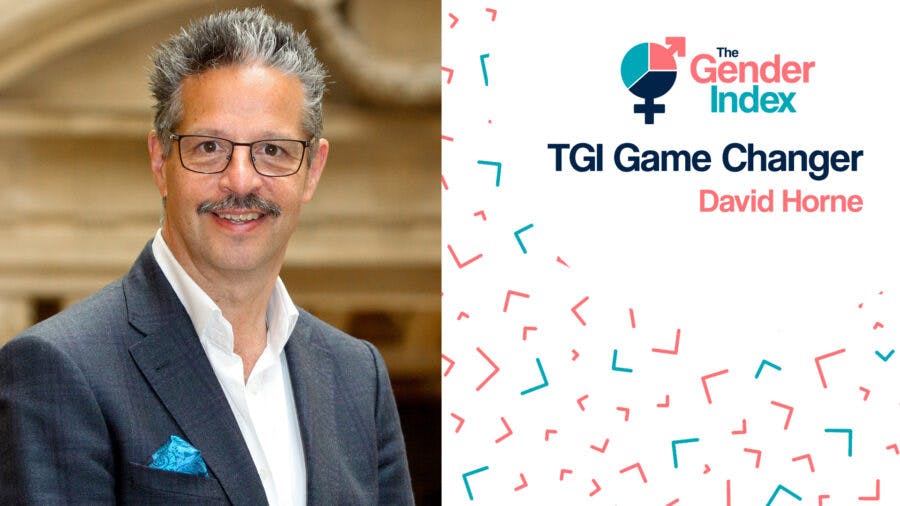We use cookies to effortlessly improve your experience on our site. Cookies also help us understand how our site is being used, so that we can keep making it better. You can read more about it in our cookie policy and change your settings here at any time.
"The reality is the guys are still getting 85% of the money"

David B Horne is an award-winning author, speaker and founder of Funding Focus. The social enterprise runs conferences and training programmes providing a platform to connect diverse voices from across the entrepreneurial and investment communities.
What are the latest statistics on funding for female founders?
The current landscape is pretty dire and the level of funding to female founders is shockingly low. 2020 was the best year when the level of funding to female founders hit 2%. But statistics published by Pitchbook for 2022 in the UK and Europe show it has fallen back below 1%. Even though the number of pitch decks submitted have been in line and growing. A report from the British Business Bank in 2019 showed female founders are submitting in excess of 5% of pitch decks and getting less than 1% of the money.
Mixed gender teams fare a little better – they are now at 12% – but the reality is the guys are still getting 85% or more of the money.
What are the reasons for this gender inequality in investment?
I put it down to 3 areas:
- The fund management industry is still what they call ‘pale, male and stale’. There was a great article in 2019 by Morning Star where they analysed all the fund managers of listed funds in the UK. There were around 1,500 in total, and among them were more fund managers named David than there were fund managers who were female. This permeates the Venture Capital industry as well: there are still a huge number of firms that don’t have any women in their investment committees.
- The inherent gender bias also plays a huge part. Professor Dana Kanze analysed Q&A sessions between entrepreneurs and venture capitalists at TechCrunch events over a 7-year period. She found no material difference between the way male and female founders pitched their businesses. But the analysis found a significant difference in the kinds of questions they were asked by investors. 67% of male founders were asked promotion questions – ‘How are you going to double your market share?’, ‘How are you going to hire 100 new employees?’. Meanwhile 66% of women were asked prevention questions – ‘How are you going to protect your customers from the competition?’, ‘What if some of your key people leave?’. And both male and female investors showed the same bias.
- Women tend to be much more realistic when they are preparing their financial projections. They put their analyses together and say, ‘Right to do this I need £241,162’. And the guys will say, ‘I need £2 million’ and just wing it. Women deliver and this is the crazy thing. There’s been various research, including one study which looked at businesses with diverse leadership teams over a 10 year period. The women are getting better results but the venture capitalists are still investing in the men because they look like them, sound like them and went to the same university.
What initiatives are helping drive change?
It’s not to say things aren’t moving forward, but they’re moving forward at a very slow pace. One of the great things to come out of the Rose Review was the Investing in Women Code, published by the Treasury. More and more people are signing up to it. Yet when I was doing research for my book I looked at all the signatories on the Investing in Women Code and then I looked at all the members of the British Venture Capital Association and most of them hadn’t signed the code. One of the inherent problems is that they are already making a tonne of money so why should they change something that’s working well?
What’s your advice to female entrepreneurs looking for funding?
Keep going and don’t give up. Yes it’s hard, but the most important thing is to do the research on the potential investors you’re looking at approaching. There’s been an explosion in VC funding and the number of entrepreneurs seeking funding. I was speaking recently with the manager of a medium-sized VC fund and he told me they’d had 8,000 applications for funding last year. That’s nearly 700 a month, more than 30 a day. They made just 16 investments.
What happens is the junior member of the team is given a checklist and probably has 60 seconds to do a quick scan and say yes or no. If it’s a ‘no’, that’s it – they go onto the discard pile and don’t get a reply. (That’s one of the complaints: it’s like a black hole and you never hear back). Those that get a ‘yes’ will get another review which will be five minutes. The filtering up process is quite brutal so I always say research the firms, don’t do a spray and pray approach. Find out their criteria, what are they looking for: if you’re an Adtech business and the VC firm says they invest in fintech businesses then don’t bother applying!
What else is shifting the needle on inequality?
The Gender Index is great – anything that is providing that kind of granular data on gender inequality is very powerful.
I’m working on launching a new investment fund that will invest in a company where one or more of the founders is female and / or non-white ethnicity.
I’m an optimist and believe change will happen. But I think it will take generational change to get rid of the inherent biases female founders encounter.

